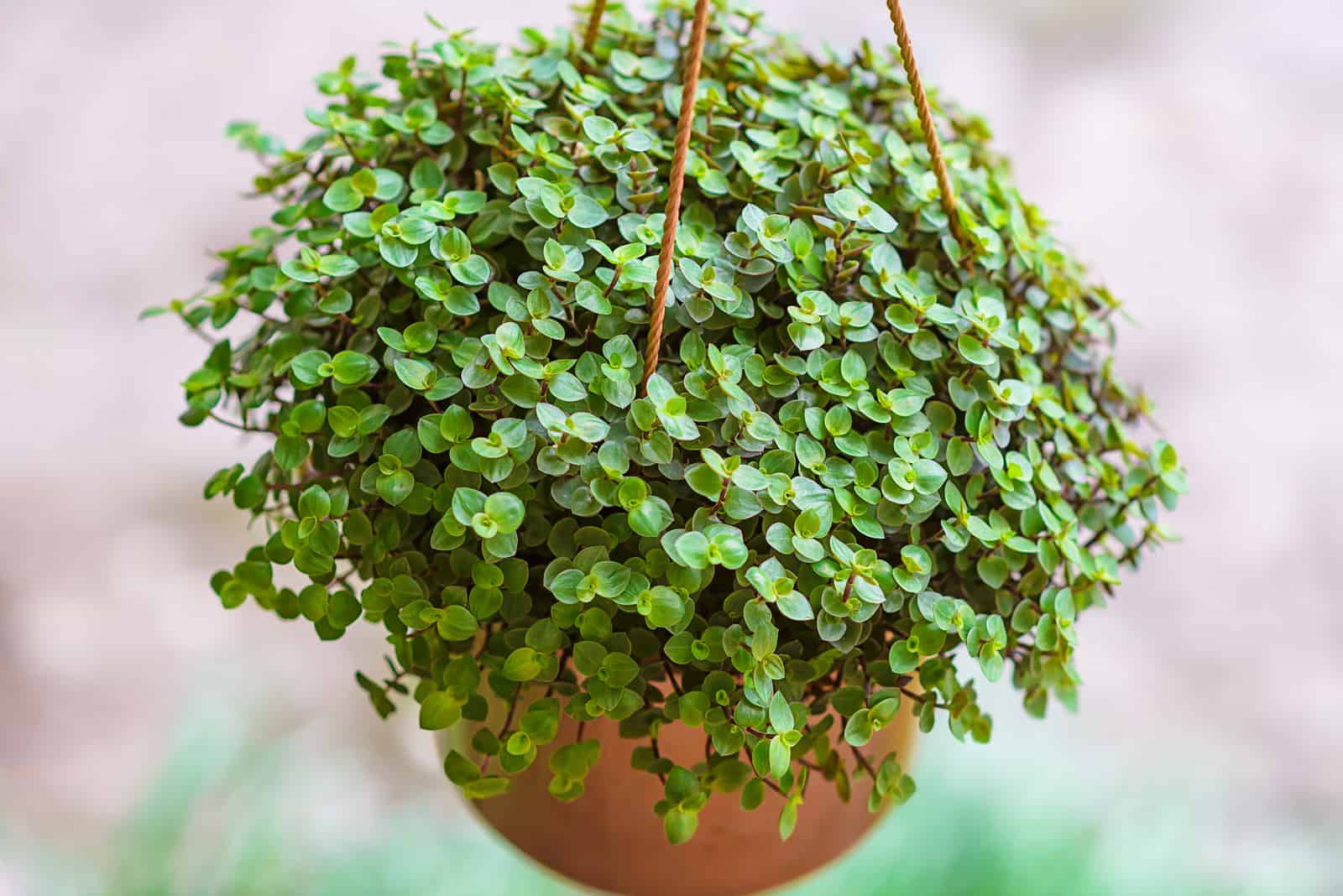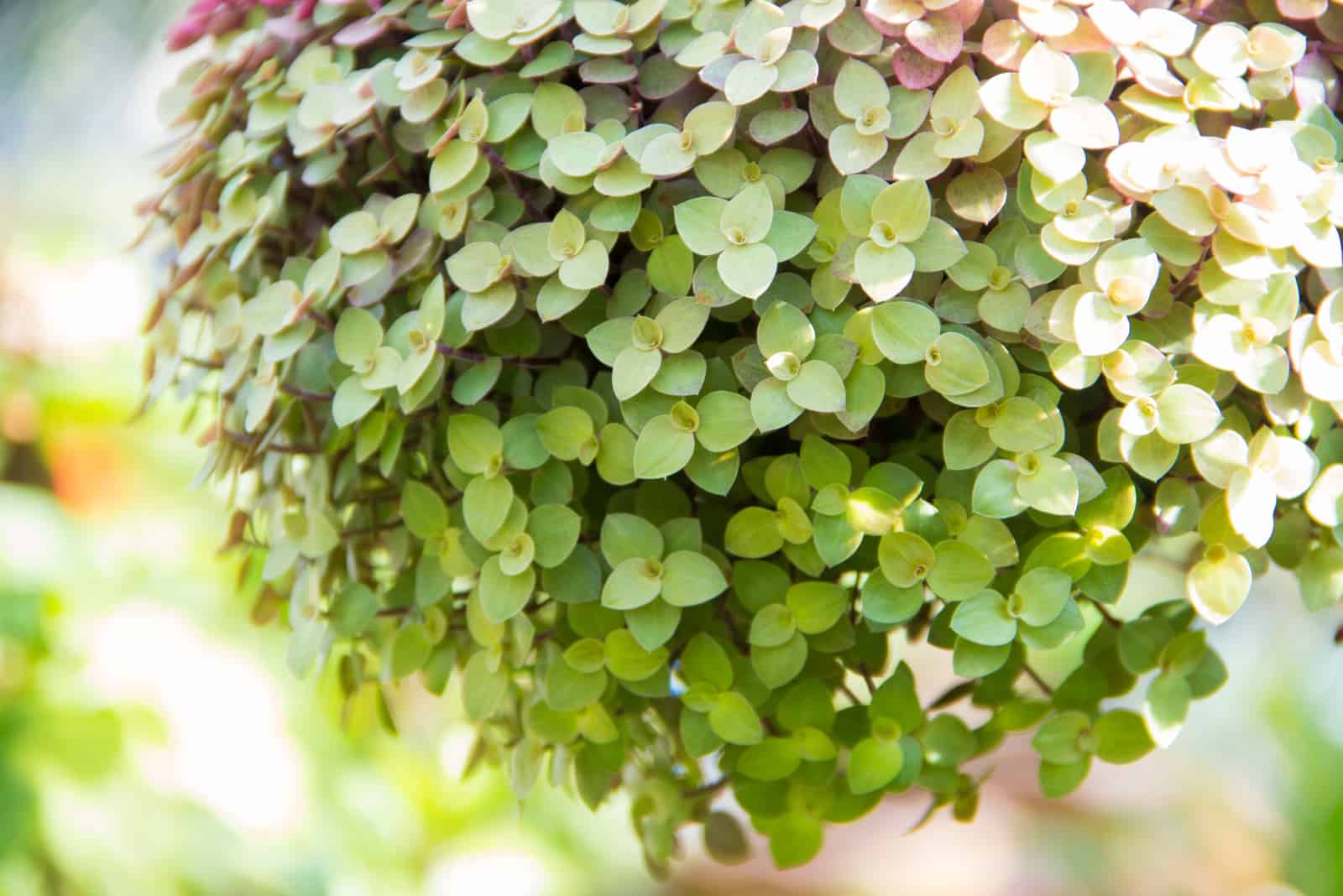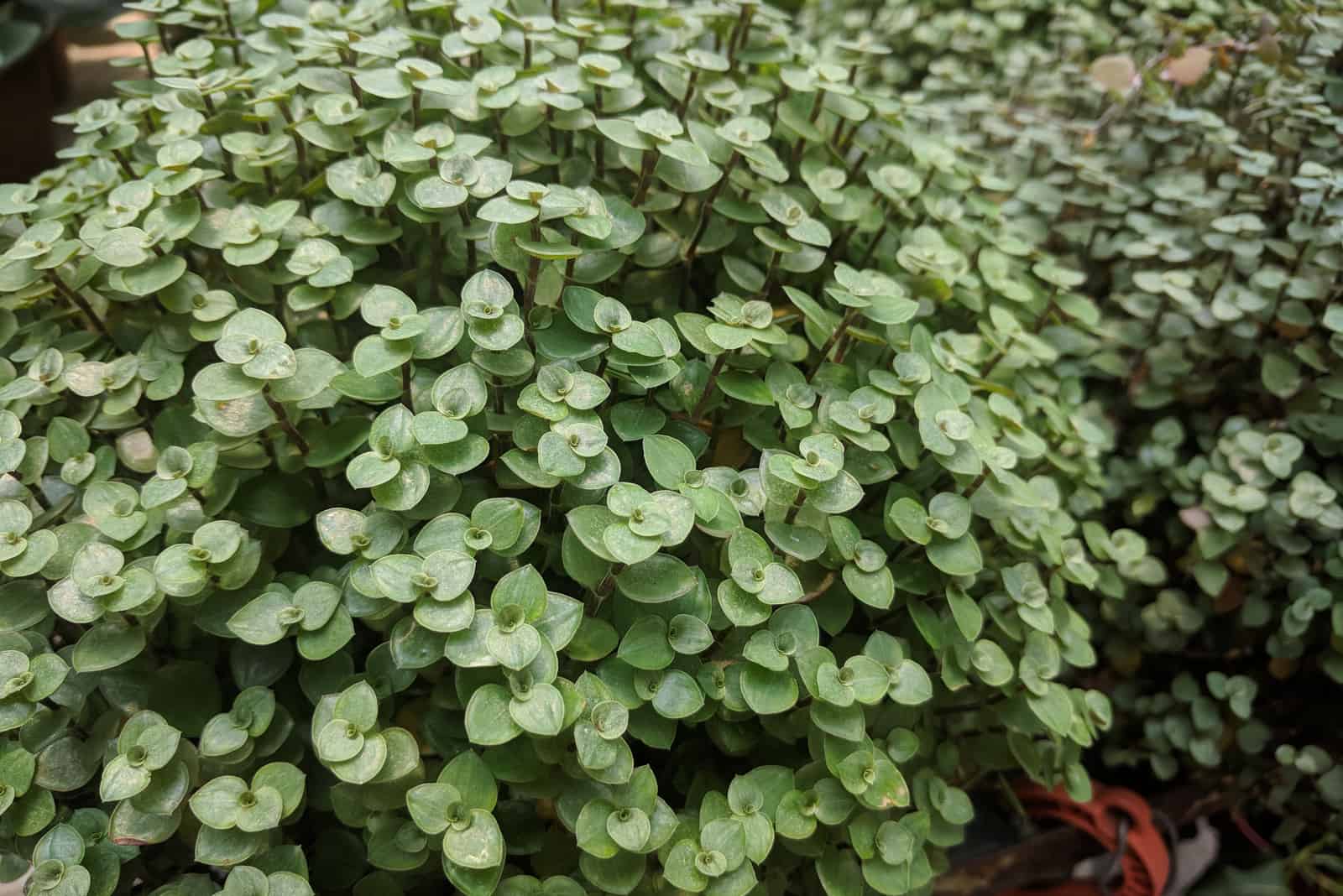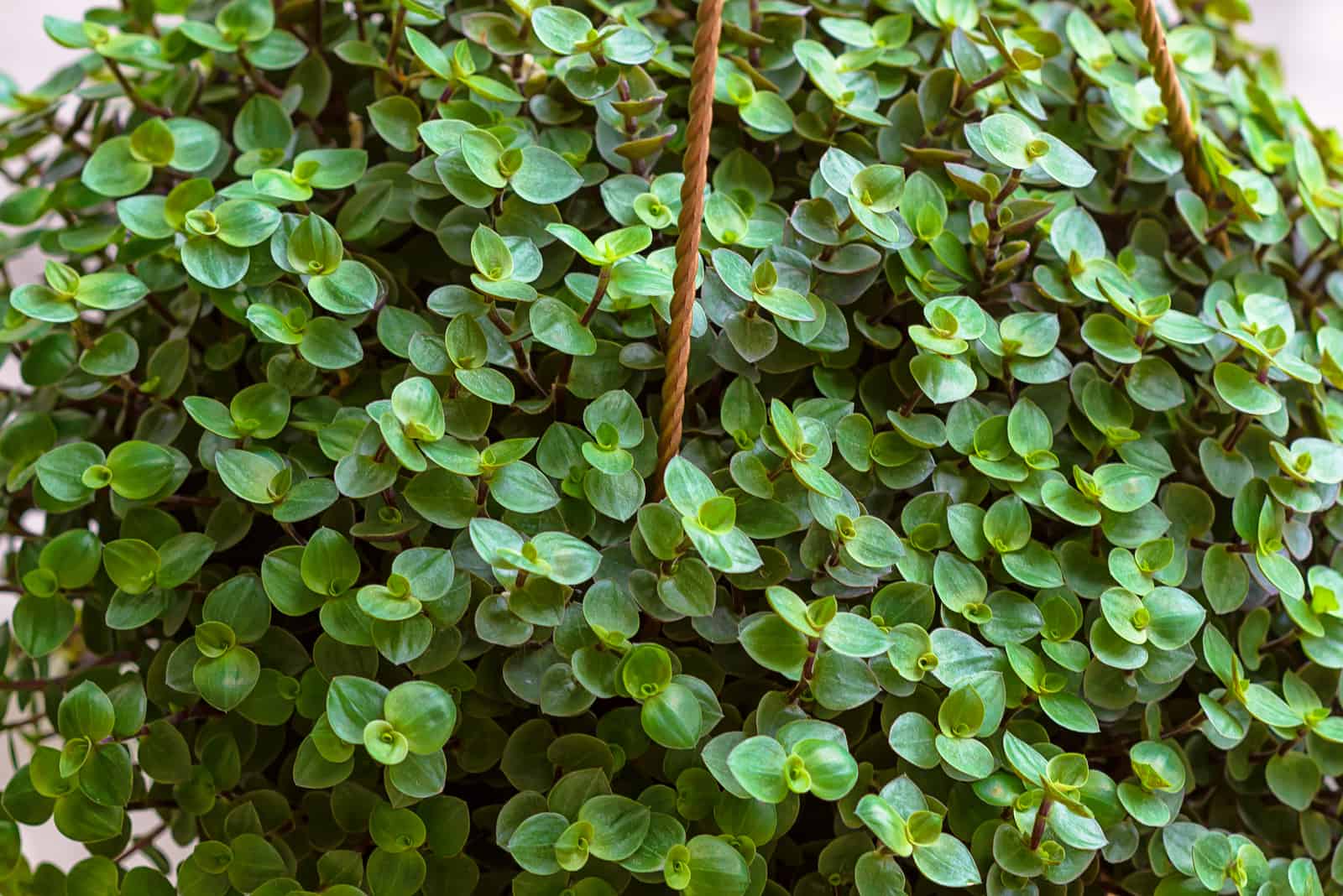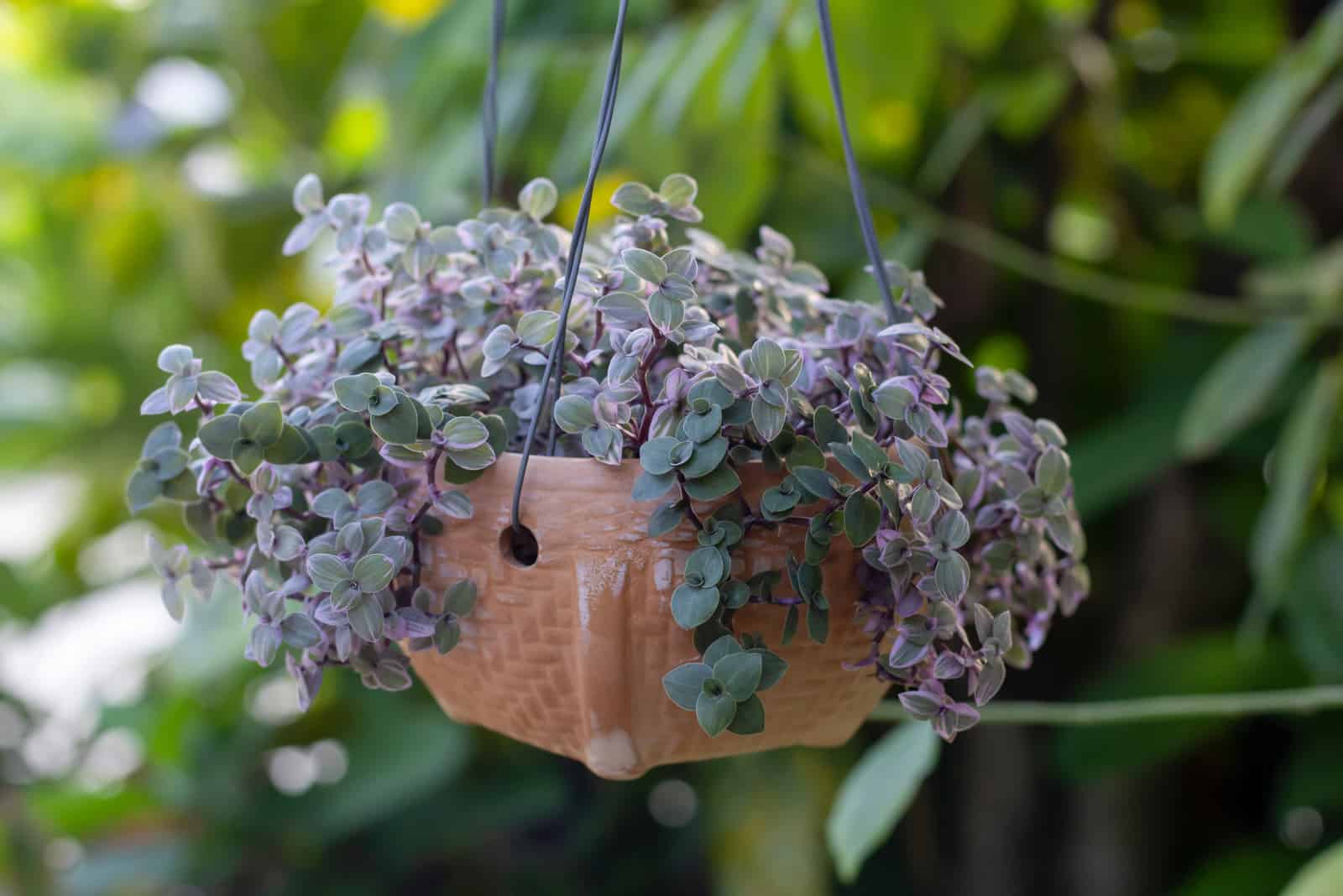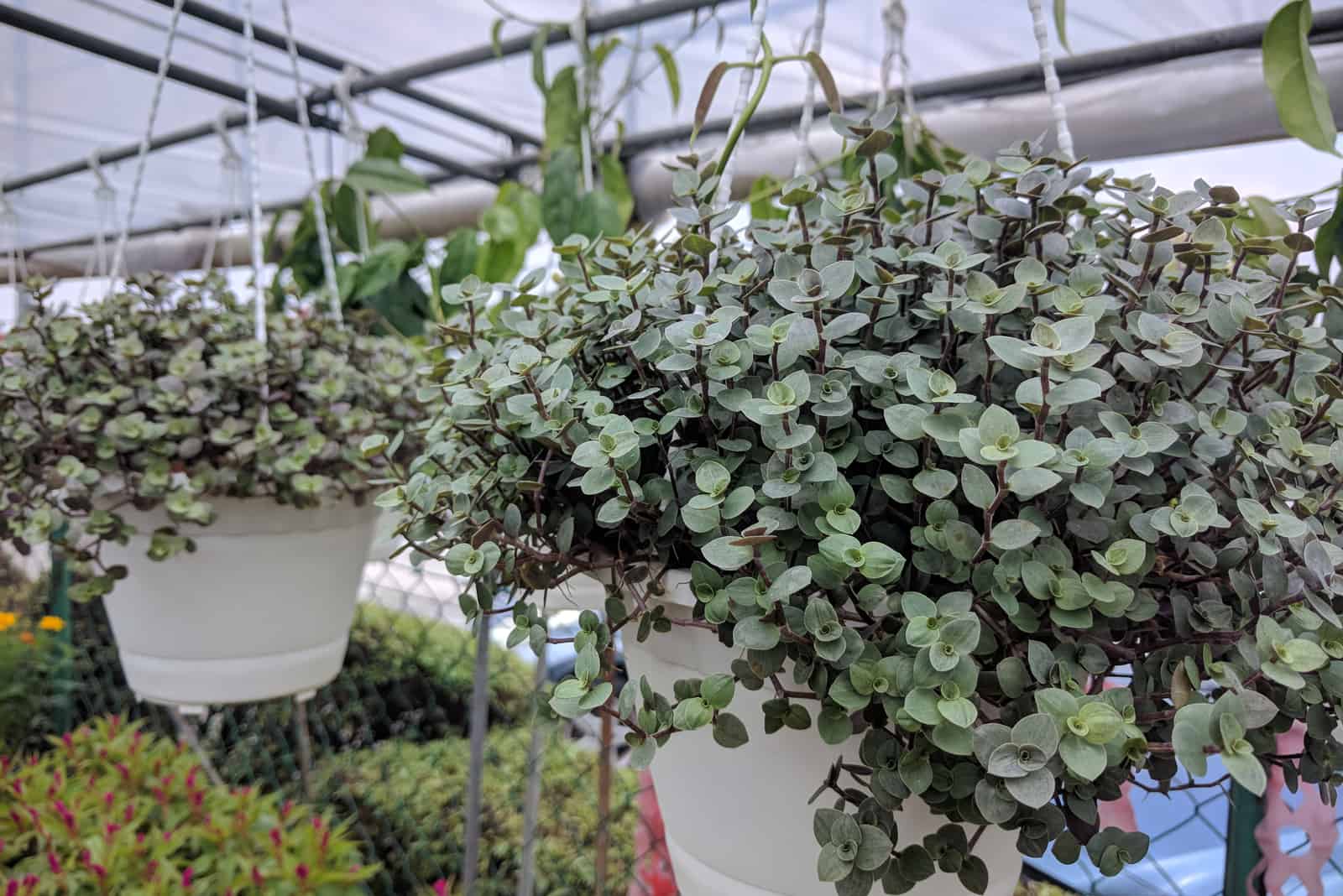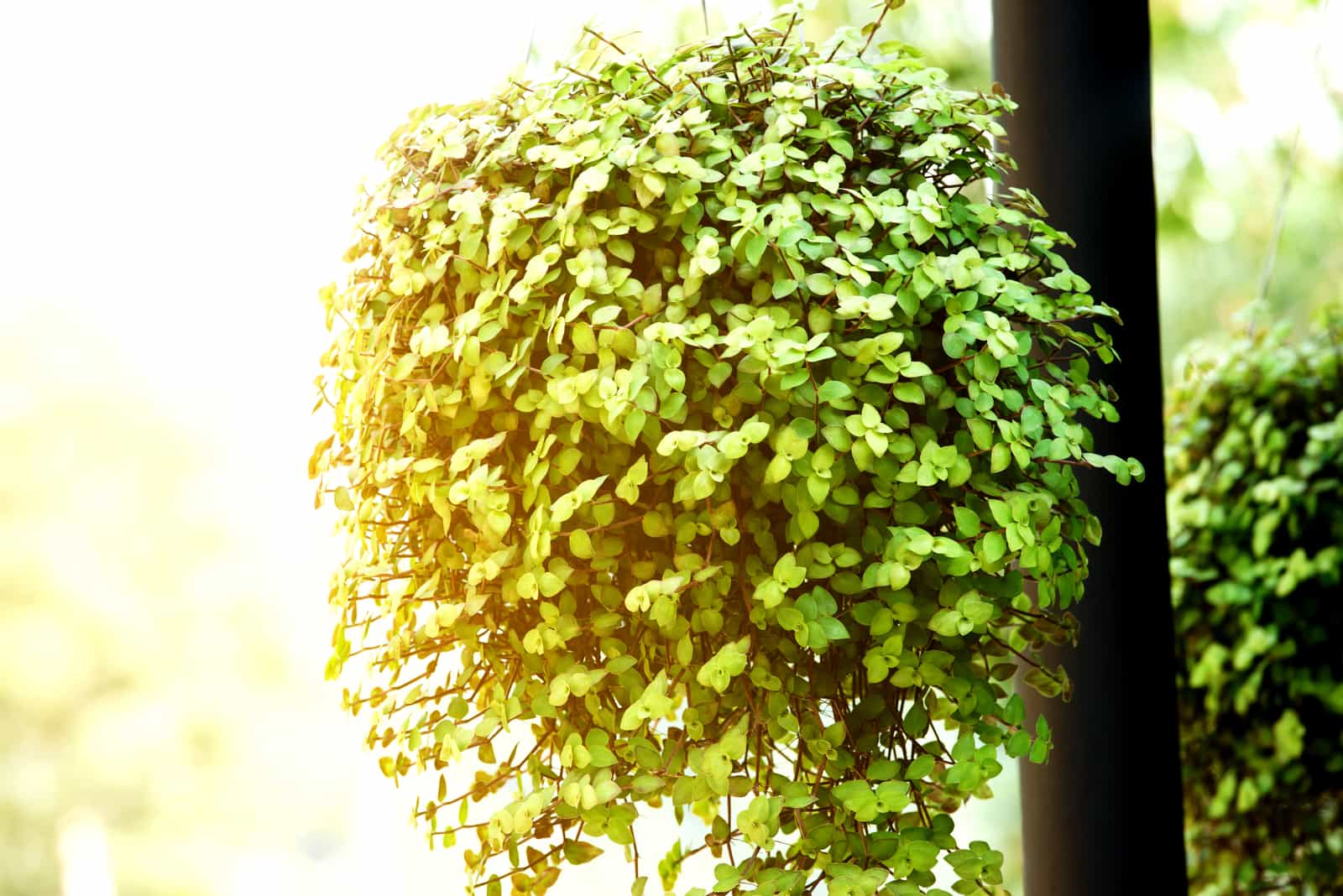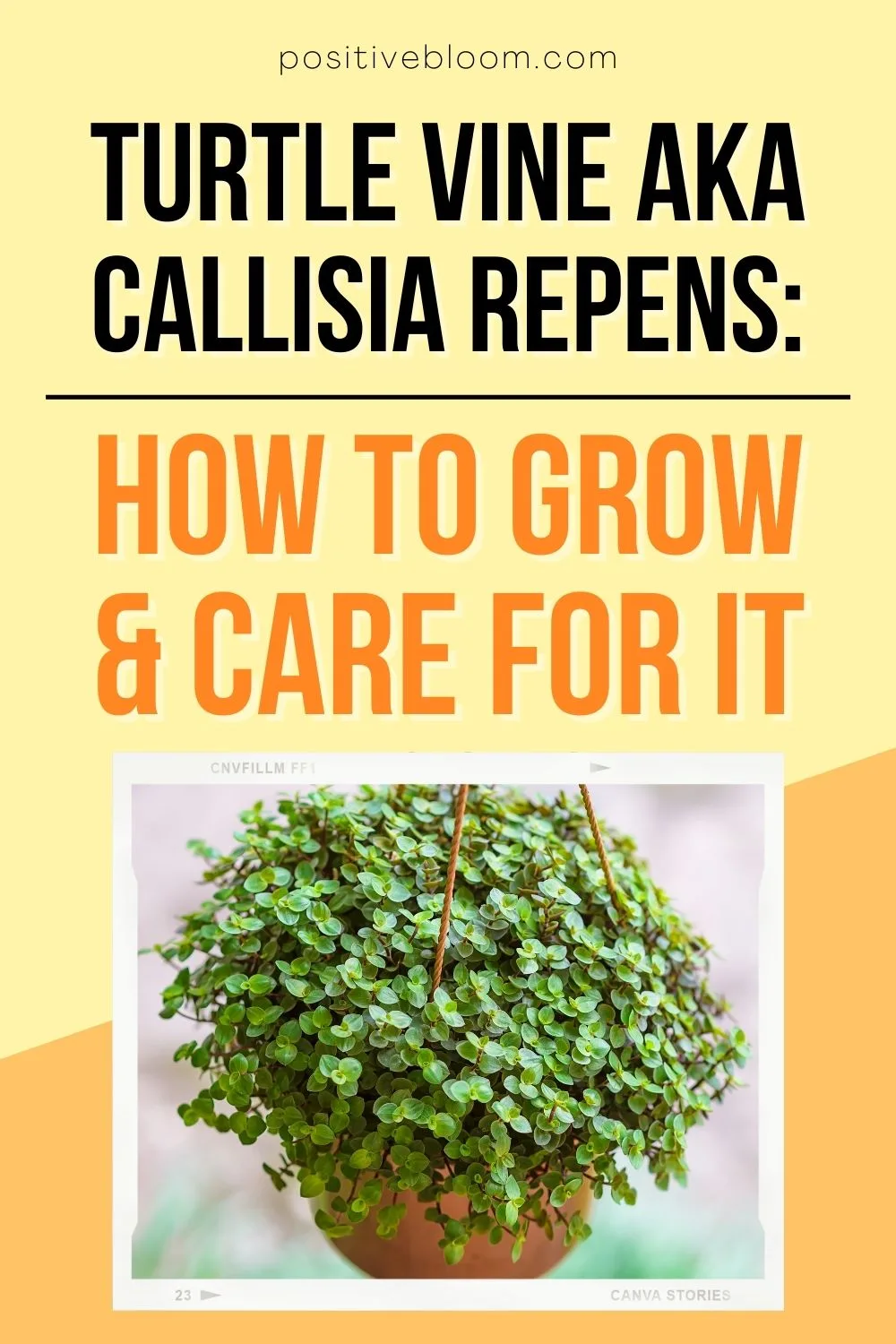The Turtle Vine, aka Callisia Repens, is one of the most beautiful succulent plants I have ever seen, especially when it’s placed in a hanging basket.
The Callisia is related to the Tradescantia family, and they are similar because they both trail or spread.
The Turtle Vine is an easy-care plant, which makes it even more attractive.
Read on to learn how to grow and care for a Turtle Vine, Callisia Repens.
But first some general information:
[table id=26 /]
How Do You Take Care Of A Turtle Vine?
These are low-maintenance plants, so it isn’t hard to care for them.
A moderate watering schedule and humidity, bright indirect light, and moist soil are what this plant needs.
Let’s get into details.
Watering
Succulents don’t need much watering in general, which is part of what makes them low maintenance. The Turtle Vine is a little bit different as it doesn’t tolerate drought conditions.
You should water your Turtle Vine plant every two weeks, and water it approximately twice a month during summer and once a month during winter.
Turtle Vine growers should follow this watering schedule as long as every condition outlined in the following sections are ensured.
You should water your plant using room temperature water to avoid temperature stress.
Let the soil dry between watering, but don’t let it dry out completely.
To check if the soil is ready for watering, you can just put your finger in the soil, and if it feels wet don’t water it. You can also use a wooden stick; the plant doesn’t need watering if the soil remains on the stick after you pull it out.
If you are not sure about the methods above, you can always use a moisture meter.
Always water the plant thoroughly if the soil is completely dried out.
Humidity
The Callisia Repens prefers moderate humidity levels.
Just pay attention if the humidity goes too low. You can always use a humidifier in this case.
Keep the plant away from vents and air conditioners.
Soil
As with every other plant, the soil plays a significant role. The Turtle Vine Plant enjoys moist soil.
These plants have three potting soil requirements, and you must follow them to ensure your Turtle Vine thrives.
1. A good drainage system (add perlite to improve drainage)
2. Potting mix (use succulent or cacti potting mix, or homemade mix-perlite, sand, and peat moss)
3. pH levels of 5.5 – 6.5
It has to be well-draining. To achieve this, you can purchase a pot with drainage holes.
Light: Can Turtle Vines Take Full Sun?
The Turtle Vine plant requires bright indirect light.
These plants shouldn’t be exposed to direct sunlight and require partial shade.
Place the plant near a north or east-facing windowsill to ensure good light conditions.
During summer, you can use a curtain to avoid full sun and create partial shade. During the winter you can put the plant in a place with bright light.
Low light levels will stunt the Turtle Vine’s growth.
Temperature
The perfect indoor temperature ranges from 60-72°F.
The Callisia Repens can tolerate colder temperatures, but should never be exposed to them for too long.
Fertilization
As far as the growing season is concerned, the Turtle Vine plant needs to be fertilized regularly (from late spring to late summer).
During fall and winter, this plant doesn’t need watering at all.
Choose a balanced liquid fertilizer designed for houseplants or succulents.
Pruning
Although turtle vines don’t need pruning, pruning may be required if there are some damaged leaves or stems.
Ensure that the scissors or pruners are sterilized to avoid any bacterial infection or fungal diseases when pruning.
Avoid cutting yellowed tissue as it can increase susceptibility to bacterial infections.
Prune during the growing season; early spring is the best choice.
Here’s a video on shaping turtle vine:
Repotting
The best time to repot a Callisia Repens is in early or mid-spring.
These fast-growing plants need to be repotted once every two years.
Mature Turtle Vines don’t need repotting that often.
Take the Turtle Vine out of the pot and inspect if there are any signs of an infection.
Always consider purchasing a pot with drainage holes to avoid clogged air spaces in the soil mix if you accidentally over water your plant.
When it comes to appropriate pot size, choose a medium-sized or larger pot.
You can use an old pot, but be sure to replace the old potting mix with a fresh one to avoid any complications.
Put the potting mix into the new pot and then put the turtle vine in it.
Water it thoroughly to finish up.
How Do You Propagate Turtle Vines?
If you want to propagate this awesome plant so you can have more in your house or gift some to friends and family, here is everything you need to know.
You will need:
• Gloves
• Sterilized shears
• New potting mix
• A jar of water
This is a straightforward way to propagate, just follow these steps:
• With sterilized shears, cut off a stem (cuttings should be 3 to 4 inches in size).
• Place the cutting with at least two nodes in water, leaving the leaves above. You should change the water regularly to prevent the spread of bacteria.
• Move the jar with water to someplace with bright indirect light.
• 2-6 weeks later, or when the roots develop, bury the roots in fresh potting soil.
Wait a month and a half until you replant the cuttings.
Common Issues
The most common issues with Turtle Vine plants are root rot, yellow leaves, and pests.
Root Rot
Root rot is primarily caused by overwatering.
If you suspect root rot, take the plant out of the pot and inspect the roots. If they smell unpleasant and the soil has a mushy appearance, you might have overwatered your Turtle Vine plant.
Overwatering will cause wet soil with the Callisia Repens, rendering it more susceptible to diseases caused by pathogens.
One of the most common pathogens is fungus, which decomposes the root tissue.
Excess water will be consumed by fungus, which causes root rot.
Root rot is one of the reasons both pot size and a pot with drainage holes are so important.
Extra soil will retain more water and prevent the turtle vine plant from absorbing the nutrients it needs.
Discolored Leaves (Leaves Turning Yellow)
The bad thing about yellow leaves is that they can appear for many reasons.
Direct sunlight, excessive watering, and temperature shock are possible culprits.
For the Turtle Vine, the most common reason is under watering or direct sunlight.
When faced with direct sunlight, green leaves will turn yellow.
The best solution is to remove damaged leaves and place the plant in a room with bright indirect light.
Pests
The most common pests that afflict the Turtle Vine plant are spider mites and mealybugs.
Spider mites will cause the appearance of tiny white or brown spots on the undersides of the leaves.
If you notice any cotton-like changes on your plant, it may be infested with mealy bugs. These bugs are tiny and white, and their presence on your plant is easily spotted.
What Should You Do If The Turtle Vine Is Attacked By Bugs?
To get rid of the spider mites, mix alcohol and water, put the mixture in a spray bottle, and spray over the spider mites.
You can also use dish soap. Make a mixture that contains dish soap and water and put the mixture in a spray bottle, then spray it over the spider mites.
If you want to remove mealybugs, you can use rubbing alcohol and dish soap. Mix it and spray over the mealybugs, or use neem oil.
Varieties Of Callisia Repens
• Callisia Repens’ Pink Lady’ is a low-growing plant (4-6 inches) with tiny leaves of different shades of green to pink.
• Callisia Repens Variegata (Bolivian Jew) has cream leaves with pink or green streaks.
• Callisia Repens ‘Bianca’ has glossy leaves that turn to pink and look stunning in hanging baskets.
• Callisia Repens has green leaves with pink stems and purple undersides.
Is The Turtle Vine Poisonous?
Turtle Vines are poisonous due to the calcium oxalate in the leaves.
The Callisia Repens toxicity is the reason you must keep young children and pets away from the plant by keeping it far out of their reach.
Of course, Turtle Vine plants aren’t dangerous unless ingested. Young children and pets are unaware of the consequences, so they could eat the leaves without realizing the danger.
Ingesting the leaves can cause nausea and swelling of the lips, mouth, and throat.
Remember to always remove every fallen leaf from the floor.
Wrapping Up
Now that you’ve discovered everything you need to know about the Turtle Vine, you’re well equipped to deal with any complications which may occur. Even if they do, you’ll be able to fix them in no time!
Make sure the Callisia Repens has everything it needs, and it will be thriving in no time!
Until next time!
Like this post? Share or pin it for later!

